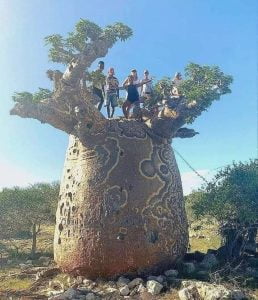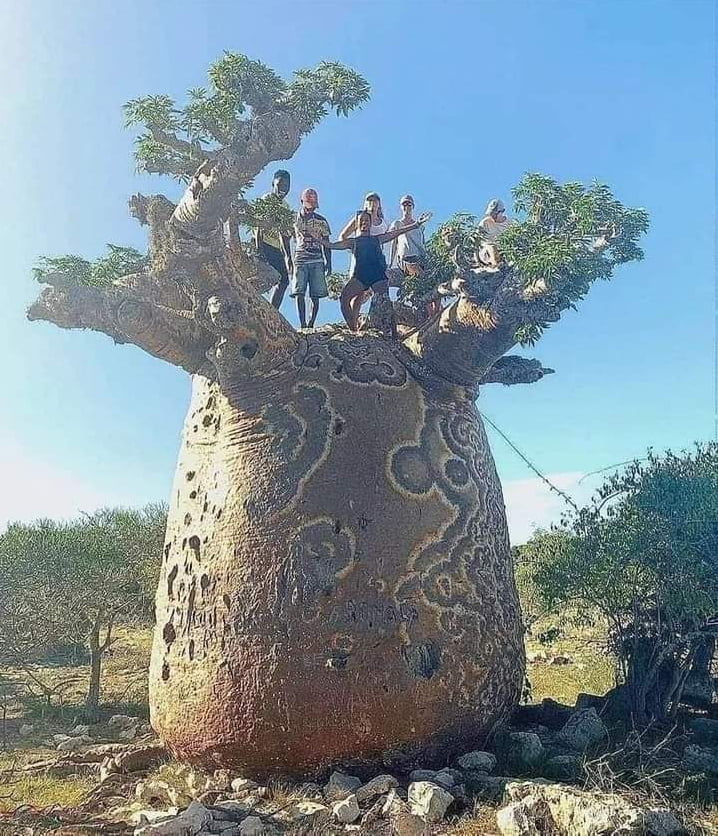They are notable for their distinctive barrel-shaped trunks and remarkable longevity, with some specimens estimated to be in excess of 1,000 years old.
The most common species is the African baobab (Adansonia digitata), which can attain heights of up to 25 meters and trunk diameters of up to 10 meters. Notable species include the Madagascar baobabs (A. grandidieri, A. madagascariensis, A. perrieri, A. rubrostipa, A. suarezensis, A. za), found only in Madagascar, and the Australian baobab (A. gregorii), located in northwestern Australia. Baobabs have adapted to survive in environments with seasonal aridity.
They store water in their trunks, which can hold up to 120,000 liters. The trees lose their leaves during the dry season and remain leafless for about 8 months.
Baobabs have been an important resource for local communities in Africa and Australia for millennia. The trees provide:
Food – The leaves, fruit pulp, and seeds are edible and nutritious
Water – The water-filled trunks can be accessed in times of drought
Medicine –
The bark, leaves, and fruit are used in traditional remedies, although scientific evidence is limited
Shelter – Hollow trunks have been used as shelters, prisons, and even burial sites
Tools
The bark fiber is used to make rope, cloth, and hunting/fishing tools
Conservation
While baobabs are culturally protected in some regions, many species face threats from habitat loss, drought, and climate change. Several Madagascar baobab species are classified as endangered or near-threatened by the IUCN.
In recent years, some of the oldest and largest African baobabs have died unexpectedly, possibly due to the effects of global warming.
Baobab is the world’s thickest trunk! Its hollow stem measures more than 20 meters in diameter and can store up to 120,000 litres of water. Its size is so impressive that some baobabs are used as housing, sheds or animal shelters, but sadly the species is endangered.
It is estimated that they can live up to two thousand years, calculated by their diameter. Its scientific name is Adansonia Digitata, but they are also known as baobabs, baobabs or Calabria.
The tree is truly powerful: it houses hundreds of animals, birds and insects in its huge trunks. Its flowers measure up to 20 cm long and bloom overnight, but they contain nectar and fruits that serve as food for tribes and animals in disert, as well as have indications for their use to treat malaria.

A special oil is extracted from the sap of this tree; from its trunk, the indigenous of Madagascar build canoes (kind of long canoe); and its cork has a medicinal compound to fight epilepsy. Not surprisingly, in Africa, baobabs represent life: they’re symbols of fertility, abundance and healing.










